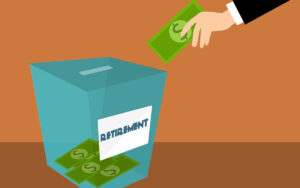The wildest and most unpredictable earnings season many of us are likely to ever see starts today. It begins with markets moving higher as political leaders sound more optimistic about bending the virus curve and the first reporting companies strike a relatively positive tone.
In a more typical earnings season, company results would steer the focus away from geopolitical and other outside events. This time is different, because fighting the virus is going to be front and center no matter what companies report, and directly affects how they might do in the near future. That means news on the public health front could conceivably blunt the impact of some bad earnings news, which seems to be happening early today.
The bad results also might get shaken off because no one expected them to be good in the first place and most companies’ shares already took a big blow over the last month or two. That seems to be the case with both of the big banks reporting this morning.
The Morgan Show
JP Morgan Chase (JPM) got the earnings ball rolling by reporting profits way below analysts’ estimates as the company set aside a huge chunk of change—$6.8 billion—for its credit reserves. This means the bank probably expects defaults on the loans it has out, but putting money away now is one strategy to protect its business. No one was expecting amazing Q1 results, so this arguably makes a lot of sense to do now.
Three of the bank’s four divisions saw profit declines in Q1, but the trading division was a bright spot, with revenue up 32%. Bond trading revenue was especially strong at $5 billion, and equities trading surged, too. Another piece of good news was the Asset and Wealth Management business seeing strong growth in loans and deposits, JPM said.
In sum, JPM’s earnings came in at 78 cents per share, down nearly 63% from the same period a year ago and way below the average analyst estimate. Revenue fell 4.4% to $28.3 billion, the bank said.
Shares of JPM rose just a little in pre-market trading, maybe a hint that investors aren’t necessarily going to immediately punish companies for bad results. Also, keep in mind that most of the banking sector has already been taken out to the woodshed this year, with JPM shares down 30% since Dec. 31.
In his message to investors, JPM CEO Jamie Dimon focused on the company’s efforts to help banking customers and investment clients by taking a variety of steps, and also on JPM’s humanitarian contributions. His comments focused on the present, but the company’s earnings call could feature more discussion about the future. Dimon is often seen as one of the more influential CEOs in the Financial sector, and what he says today might influence the market.
Dimon’s comments in the press release set a positive tone, which is what many investors probably wanted to hear. He said results were good given the challenges and that JPM built up credit reserves. He talked about the bank returning to what it does best, and his words were well received by the markets.
Like JPM, Wells Fargo (WFC)—the other major bank reporting this morning—set a positive tone in its press release and also put aside money for credit losses. In this case it was $3.1 billion, leaving Q1 earnings per share at just a penny.
WFC is especially exposed to the housing market, where millions of job losses recorded in recent weeks could affect peoples’ ability to pay their mortgages. However, like JPM, WFC shares got a lift before the opening bell. The early 2% gains might partly reflect WFC’s net interest income actually coming in above consensus. Net interest income can play a big role in banks’ profits, but many analysts expected that to be a weak spot in Q1 due to declining rates.
It wasn’t just banks today. Johnson & Johnson (JNJ) easily beat analysts’ earnings per share forecasts, but revealed a more subdued outlook to take coronavirus into account. The company’s call could be worth hearing for any updates on the coronavirus vaccine it has in development. Shares got out to 3% gains in pre-market trading. JNJ did increase its dividend, which is a real vote of confidence that appears to be getting well received.
Turning to the tech sector for a moment, shares of Roku (ROKU) spiked more than 14% in pre-market trading after the company gave a sunny outlook for its Q1 results. Shelter-in-place has helped boost viewership for the streaming platform, the company said in a press release.
Industrial and supply company Fastenal (FAST) also beat analysts’ earnings estimates and got a bump in shares of 5% in the pre-market hours.
In sum, with one day of earnings season partially in the books, results could have been worse. The numbers look bad in some cases, but they weren’t anything most investors didn’t expect. Even better, CEOs are setting a positive tone. They’re not wringing their hands and saying, “Oh no, what will we do?” They’re handling the crisis as well as they can and protecting their business for what might come.
Bumpy Ride Isn’t Over Yet
It’s hard to say this volatility is anywhere near over, with the Cboe Volatility Index (VIX) still hanging around the 40 level. That tells you we can probably continue to expect large intraday and intra-week moves.
The stock market is trying to reprice every stock at once when no one knows exactly how long this crisis will last. Things seem to be getting mitigated a bit in New York and Chicago, but the rest of the country is still a question mark, according to the healthcare experts. That’s why it’s tough to say there’ll be a “V-shaped” recovery. It’s hard to reprice the market all at once when no one is even sure when people will go back to work.
It might seem kind of surprising that the market didn’t get more of a lift yesterday from positive headlines, but early Tuesday those headlines seem to be having more impact. They included New York Gov. Andrew Cuomo saying “the worst is over if we continue to be smart” about the virus, and Goldman Sachs (GS) saying the bottom is in and a test of 2000 in the S&P 500 Index (SPX) is unlikely.
The GS note, reported on by MarketWatch, said the firm’s end-of-the-year target for the SPX is 3000, about 8% above current levels. GS based its outlook on policy support that’s helping the market, along with signs of the virus curve flattening.
Positive Expectations Might be Priced In
Maybe one reason we didn’t see a rally Monday off this one-two punch of good news is that so many positive expectations got priced in last week. It’s hard to expect that kind of strength to continue for too long, especially when the near-term data continue to look so weak.
Tomorrow’s data include March retail sales, which analysts expect to fall a steep 10%, according to Briefing.com. Empire State Manufacturing is also due Wednesday and analysts expect it to be pretty soft.
The market seems to be pricing in expectations of business getting ramped up right away if and when the going gets less treacherous on the health side of the equation. However, there’s a lot of concern there could be a lag time before everyone gets out and about. Even with the all-clear, it’s hard to believe too many would want to be the first to go to a concert or a ballgame.
Usual Suspects Powered Nasdaq to Start Week
Monday didn’t turn out all that badly considering the SPX and Dow Jones Industrial Average ($DJI) both fell 1%, with the $DJI burdened by Caterpillar (CAT) sinking nearly 9% after a downgrade.
The SPX and $DJI finished well off their lows after a late burst that carried the SPX back above the psychological level of 2750 by the close. The Nasdaq (COMP) even gained ground, helped by strength in Apple (AAPL) and the semiconductor space, and also by Amazon (AMZN) and NFLX.
On the down side, the small-cap Russell 2000 (RUT) took it on the chin Monday after showing some signs of life last week. It finished at the bottom of the index leaderboard. Often, small stocks can be a barometer for economic activity across a lot of the domestic economy, so you want to see more strength there if you’re looking for green shoots.
Getting back to Monday’s big gainers, both AMZN and NFLX been nothing short of amazing to watch these last few weeks. First of all, places where people are actually shopping are doing well, and that includes AMZN. You don’t think of AMZN as a Consumer Staples company and it’s not in that sector, but Staples have been holding up well in general. AMZN sells a lot of products like paper towels and soda pop that people continue to buy even in a recession.
AMZN isn’t alone in that particular boat with its combination of on-the-ground grocery stores (Whole Foods) and a huge online network. Walmart (WMT) and Target (TGT) could also be positioned pretty well here. If you’re a company with a nice brick-and-mortar presence combined with a good web presence, this could be an unbelievable time for you. Ebay (EBAY) shares have also had a nice little run lately, which could add to competition for consumer demand as well.
NFLX hit a new 52-week high, another potential “green shoot” as investors look for small signs of progress. New 52-week highs for any company at this point could be seen as evidence of things maybe getting a little better, but at the same time Starbucks (SBUX) and McDonald’s (MCD) both edged lower Monday as social distancing presents a challenge. Some analysts wonder how quickly customers will come back even once things reopen.
FedEx (FDX) also is an interesting one to watch, and it got an upgrade to start the week. The upgrade was based in part on 80% of the company’s business addressing the more lucrative “business-to-business” aspect of the delivery world. However, AMZN’s decision last week to suspend building a competing delivery service also might have helped FDX shares yesterday.

CHART OF THE DAY: WHEELS SPINNING FOR TRANSPORTS: It’s hard to find a sector more beaten down right now than the Dow Jones Transportation Average ($DJT—candlestic). Besides battling the current situation where airlines are flying nearly empty planes and many auto dealers remain closed, it also has to fight perceptions that it might take a while for business to come back even if the virus fades. The $DJT lags the Dow Jones Industrial Average ($DJI—purple line) by quite a bit over recent weeks. Data Source: S&P Dow Jones Indices. Chart Source:The thinkorswim® platform from TD Ameritrade. For illustrative purposes only. Past performance does not guarantee future results.
More Green Shoots? Another positive so far this week was seeing some strength in bond yields Monday, and also seeing that the crude market is in a steep contango. That means futures contracts for this summer are priced way above the front-month May contract. Looking ahead a few months, you can find U.S. crude futures trading up around $35 a barrel, vs. $22 for May futures. That could be a signal that some investors expect warmer economic winds along with the summer heat. In fact, if you want to see a “V-shape” recovery forecast, check out the CME Group’s crude oil futures quotes.
Insider Buys Seen as Vote of Confidence: Arguably one of the more tangible signs of optimism bubbling up on Wall Street is a pick-up in insider buying. The Financial Times reported that executives at big US companies bought their own stock in record numbers last month. Insider buying from chief executives, chief financial officers and board directors at big US public companies hit $1.1 billion in March, the biggest total since October 2013.
The purchases came from 994 executives, a record going back to 1990. It’s arguably a vote of confidence—executives are buying their stock at a time when the rest of the world is panicking, Most of these people are already compensated in stock, so the fact they’re putting more of their net worth in there could be a good sign for the company and the market. Just because insiders buy doesn’t mean the average investor has to jump in, but it is something that gets monitored by market participants. It might be worth checking your own portfolio to see if any of your large positions saw evidence of insider buying (or selling) recently. Any flight to the exit could raise yellow flags.
Fill ‘Er Up! That’s the big concern for the Energy sector. If there’s nowhere to put crude, prices could fall to historic lows in some regions. The OPEC production cut was historic, but it might not be enough to stave off the impact of too much product building up in storage. Already, U.S. drivers are using less gasoline daily than at any time since 1968. The roughly 10 million barrels going off the market starting May 1 represent only 10% of world production. Some analysts expect crude supplies to continue building well into next month, despite the agreement, because it’s hard to shut things down on a dime.
Crude prices didn’t get much of a jolt Monday from the agreement, actually ending the day lower. That could be in part because some market participants might not trust all of OPEC and Russia to stick with it. The Energy sector, however, did appear to receive a bit of support from relief that maybe the worst won’t happen and a floor can be set under the crude market. Any improvement in that bruised and battered sector, now down more than 40% year to date, might help ease volatility elsewhere in the market.
In the meantime, look for Wednesday’s Energy Information Administration (EIA) weekly report tomorrow to see if U.S. producers are still putting away vast amounts of product. The 15 million-barrel build the previous week was enormous. Gasoline production did decrease in early April, but if crude output doesn’t fall significantly, it’s just going to increase the levels of unrefined oil being stored away and weighing on crude prices.
Good Trading



